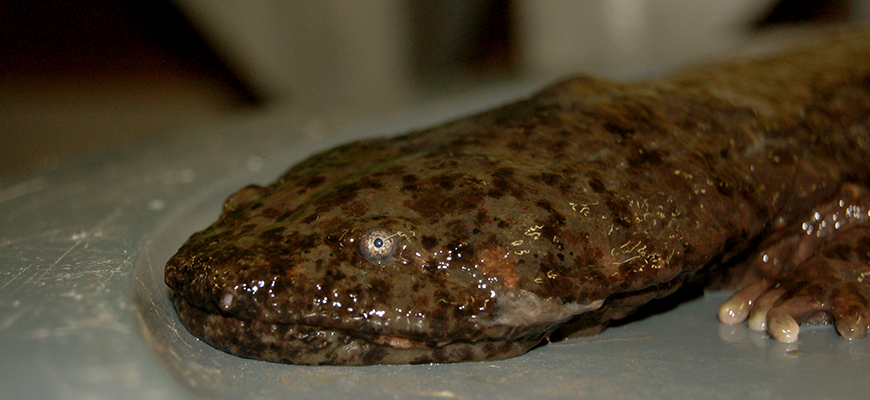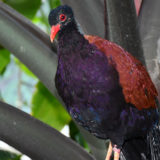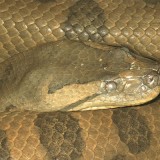RANGE
Southwestern and southcentral New York, west to southern Illinois, south to Northeastern Mississippi and into northern parts of Alabama and Georgia. Small subspecies populations in isolated regions of Missouri and the Ozarks of Arkansas.
Mainly in the Ohio, Susquehanna and Allegheny river watersheds.
HABITAT
Prefer clear, unpolluted, fast moving streams and rivers with rocky bottoms for shelter and building of nests. Water needs to be well oxygenated, which is generally characteristic of streams with numerous riffle areas present.
SIZE
The largest aquatic salamander in North America. Can reach lengths of up to 29 inches. Average between 12 to 29 inches. Males tend to be smaller than females.
LIFE EXPECTANCY
Average about 30 years. One individual kept in captivity lived 52 years.
DIET
Wild: Will eat most anything they can swallow. Generally feed on crayfish, fish, frogs, other salamanders and a wide variety of invertebrates.
Zoo: Minnows, small fish, crayfish, earthworms, specially prepared diets.
REPRODUCTION
Males and females become sexually mature at about 5 – 7 years. Courtship and breeding generally occur in late summer. Males seek out rocky to gravely, sheltered areas where they excavate a large nest chamber in which to lure females to lay their eggs. Egg carrying females are corralled into the nest sites by the males. Several females may lay their eggs in a given males nest. Fertilization is external. Females lay from 150 to 450 eggs, in egg clusters about the size of a softball. Each individual egg is approximately 5 to 7 mm in diameter. As the breeding pair are in the nesting chamber they move gently back and forth to insure a thorough mixing of eggs and seminal fluids. Once the eggs are laid, the males run the females off and guard the nest until the eggs begin to hatch about 68 – 75 days later. Larvae are about 1 ¼ inches long at hatching and retain a yolk sac to feed on for several day thereafter.
BEHAVIOR
Hellbenders are aquatic organisms, never leaving the water, and are active throughout the year. They are nocturnal in nature. Very little is known about their activity once they hatch out as larvae, since they are seldom encountered. Hellbenders spend most of their daylight hours in their self-excavated shelters, which they leave at night to forage for food.
POINTS OF INTEREST
The hellbender is perfectly adapted to its particular habitat, which is usually fast moving, rocky bottomed streams. The flattened head and body, short stout legs and rudder-like tail helps it hold its position in the quick moving water.
Hellbenders have deeply wrinkled skin along their sides which cause an increase in overall surface area and thus skin to water contact. This increased surface area is very important since the primary method of the hellbender for obtaining oxygen is through its skin. The Hellbender has lungs and will gulp air at the surface periodically, however the lungs are not very efficient and not the animals’ usual method for respiration. Adult hellbenders do retain a gill slit from their larval stage, but do not technically have gills.
The Hellbender is sometimes known as the Allegheny Alligator.
STATUS
Are listed as a species of special concern in New York State since 1983. Listed as endangered in Indiana, Ohio and Maryland. Listed as threatened in Alabama. Main problems are water pollution and dam building. In many areas, fishermen that accidentally catch them will kill them due to an unwarranted fear that they are venomous.
REFERENCES
1. Eastern Hellbender Fact Sheet, NYS Department of Environmental Conservation.
2. Division of Fish, Wildlife and Marine Resources.
3. All The Worlds Animals, Reptiles And Amphibians, Torstar Books Inc. 1986
4. Amphibians: Hellbender Salamander. Amazing Animals, Tennessee Aquarium website.





